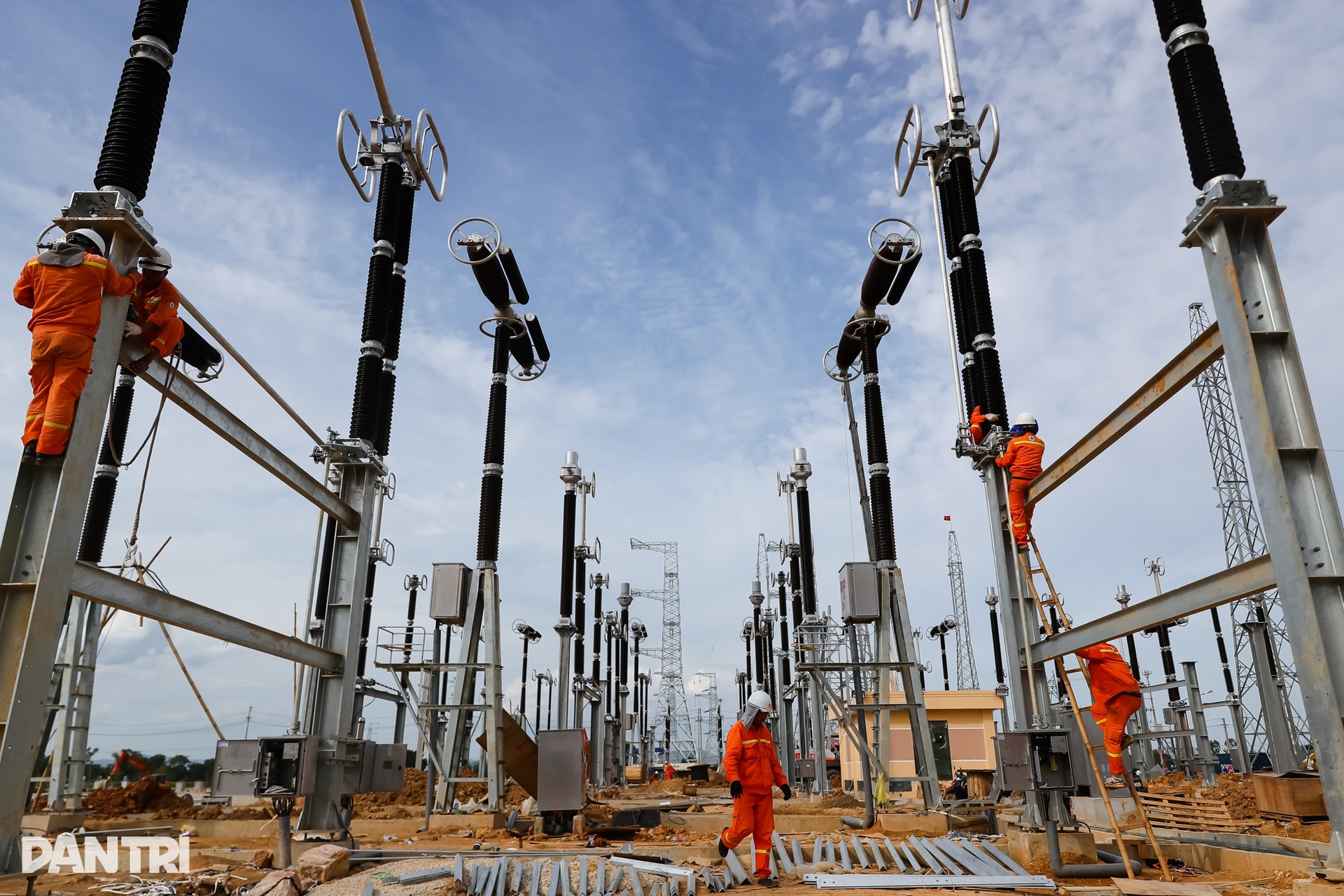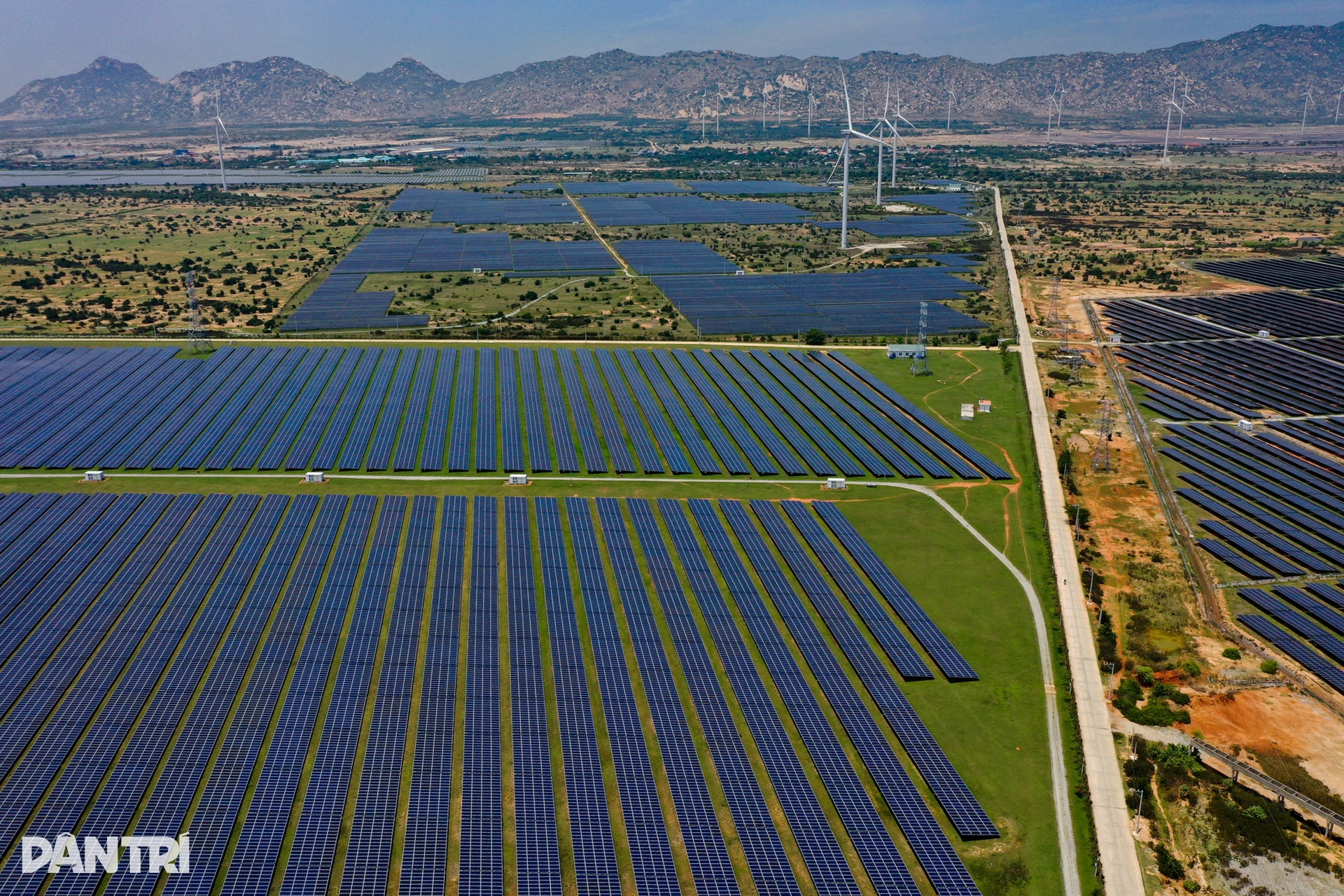Resolution 70 is considered a historic milestone for Vietnam's energy sector; no longer a patchwork of solutions; the resolution goes straight to the "thorny" issues of the past such as opening the door to a competitive electricity market, allowing private participation in the transmission sector and requiring action with an unprecedented sense of urgency.
Dan Tri newspaper reporter had an interview with Dr. Nguyen Quoc Thap, Chairman of Vietnam Petroleum Association to clarify the breakthrough contents of this important Resolution.
From ambitious goals to mechanisms that open the way for private sector
Sir, what are the most important breakthroughs of Resolution 70 just issued by the Politburo compared to Vietnam's previous energy policies?
- Resolution 70 has the following important new and breakthrough points:
First, about vision and goals:
Thoroughly grasping the general spirit: The Resolution has synthesized and fully grasped the spirit of the "quad" pillar resolutions of the Politburo in recent times (Resolutions 57, 59, 66, 68), aiming to ensure national energy security and promote the country's economic development goals in the new context.
Specifying the targets by 2030: Compared to Resolution 55 in 2020, the targets have been quantified more clearly and ambitiously to meet the economic growth target in the new context, typically the total primary energy supply reaching 150 - 170 million tons of oil equivalent; the total power source capacity reaching 183 - 236GW, 2 to 2.6 times higher than present.

Dr. Nguyen Quoc Thap, Chairman of Vietnam Petroleum Association (Photo: NVCC).
In addition, the Resolution also sets a target of reaching 256 - 624 billion kWh, an increase of 1.8 to 2 times; the proportion of renewable energy is 25 - 30% in the total primary supply (previously 15-20%) and reducing greenhouse gas emissions by 15 - 35% compared to the normal development scenario.
Second, regarding the management mechanism and the role of the subjects: The Resolution has clarified the role of each component: The Party provides comprehensive leadership; the State creates institutions and breakthrough policies; people and businesses are the center; the state economy plays a leading role and the private economic sector is an important driving force in ensuring the country's energy security.
Third, and this is the most important point, the Resolution has provided clear directions in guiding viewpoints, goals, visions, as well as specific tasks and solutions to remove most of the "bottlenecks" in mechanisms and policies in planning, licensing, capital mobilization, etc. for energy projects with specific and outstanding mechanisms and policies to attract and develop large, nationally important projects such as allowing guarantees for large, nationally important projects to remove bottlenecks that we could not do in the recent period.
Develop a competitive energy market, expand the Direct Power Purchase Agreement (DPPA) mechanism to all types of energy, not just limited to renewable energy.
Apply market prices to all types of energy under state management, without cross-subsidization between customer groups.
Allow large consumers to directly access suppliers, expand the competitive electricity market, and bring EVN into equal participation with other entities.
Refers to long-term power purchase agreements, opening up opportunities to shorten negotiation times.
Socialize transmission infrastructure, allowing transmission fee adjustments, similar to the road and highway toll model, to attract private investment.
Cutting procedures, promoting investment: Requires establishing a financial policy framework, preferential taxes to mobilize private and foreign capital (through forms such as public-private partnership - PPP), while cutting 30-50% of time and cost of investment compliance...
Finally, on the spirit of implementation: The Resolution requires drastic implementation in 2025, removing major bottlenecks immediately with the spirit of "running and queuing", not waiting. This is a very progressive mindset.
The fact that the Politburo issued a separate resolution on national energy security at this time shows its importance and what challenges is Vietnam facing, sir?
- The Resolution was issued in the context of the country entering a new stage of development, with higher socio-economic goals. Energy infrastructure is a necessary and sufficient condition to realize those goals.
Current reality shows that there is a risk that important plans such as Power Plan VIII may not be implemented on schedule.

If energy is not met, the country's economic development goals will be threatened. Therefore, the Resolution is extremely urgent, responding to practical demands, requiring energy infrastructure to be one step ahead. Like the folk concept of "electricity, roads, schools, stations", energy, along with transportation, education and health care, are indispensable pillars.
However, the targets set for 2030 are extremely challenging. The feasibility of the Resolution depends entirely on the institutionalization of specific policy mechanisms and the implementation process of ministries, branches, localities and enterprises.
Typically, the time from now until 2030 is very short to do a huge amount of work.
Along with that is the problem of power transmission infrastructure, which is both entangled with investment procedures and needs a breakthrough policy mechanism to attract socialized capital. If the mechanism is not attractive to investors, we will remain stagnant.
At the same time, achieving the 2030 goals as mentioned above will require capital of up to hundreds of billions of dollars, requiring strong and drastic financial incentive policies and the ability to mobilize domestic and foreign capital in the coming time.
Finally, the legal framework is a huge challenge. If the Ministries and Branches still follow the old way of thinking when drafting laws, that is, based on the existing legal framework, they will not be able to create breakthroughs as required by the spirit of the Resolution.
Renewable Energy: Untangling Grid, Price and Investment Capital
The resolution sets a target of renewable energy accounting for 25-30% of total primary supply by 2030. In your opinion, what obstacles regarding the power grid, prices and investment capital do we need to remove to achieve this goal?
- To achieve this ambitious goal, we must do many things in sync. First, we need to review, amend and supplement a series of legal and administrative procedures to speed up the selection and investment decisions of renewable energy projects.
Second, the transmission system must develop in parallel with the source projects. Once the mechanism is opened to the private sector, the source investors should be allowed to simultaneously develop the accompanying transmission system. This will help to resolve the current overload and delay situation.
In particular, for renewable energy to reach 25-30% of total primary supply by 2030, a huge amount of capital will be needed, and it is important that the project ensures efficiency for investors. We talk a lot about "harmonizing interests", but in reality, there are still problems.
For example, the transmission fee mechanism is "blocked" at the output, making transmission projects unable to attract private investment, putting the burden on EVN, which does not have enough strength to fully implement it.
Is the target of reducing greenhouse gas emissions by 15-35% consistent with Vietnam's Netzero commitment by 2050? According to you, what specific actions do we need to realize this target?
- This is also a very ambitious goal and to achieve it, the most urgent action is to perfect the institutions, turning the spirit of Resolution 70 into legal frameworks that are progressive enough, suitable to the reality of the new context.
In my opinion, the Electricity Law (amended) must include completely new contents and meet the goals stated in Resolution 70 such as a fully competitive electricity market, direct power purchase contracts, clear and transparent pricing mechanisms; policies to attract investment and develop energy projects in the coming period, etc.

The Land Law and the Law of the Sea also need to be amended to address the issue of licensing marine space for offshore wind power projects, an area with huge potential for emissions reduction.
At the same time, realize socialization and practically apply the public-private partnership (PPP) model.
Regarding the carbon market, we must build and operate a legal framework for the carbon market in parallel, because investors, especially export enterprises, need renewable energy certificates to enjoy international tariff incentives.
If these legal bottlenecks, especially the Electricity Law and the mechanism for offshore wind power, are not immediately removed, the target of 25-30% renewable energy and 15-35% reduction in greenhouse gas emissions by 2030 will be very difficult to achieve.
So what are the legal bottlenecks that need to be prioritized for early amendment this year, Doctor?
- As Resolution 70 requires, by 2025, bottlenecks must be fundamentally resolved. In my opinion, the top priority is the Electricity Law and the electricity market mechanism.
It is necessary to thoroughly realize the direct electricity trading mechanism, that is, to let investors in the supply chain negotiate and decide among themselves. The State should not act as an arbitrator for each transaction but should play the role of creating a legal framework and regulating through taxes.
Whether the benefits are harmonized or not depends on the businesses themselves. They commit to long-term commitments, which have low risks but may have different prices; short-term commitments have higher risks. Let the market decide those things. The role of the state is to observe, and if the entire investment chain is not profitable, there will be adjustments in macroeconomic policies. That is truly "harmonizing benefits" in a sustainable way.
Dear Doctor, along with Resolution 70, the Politburo has recently issued a series of other important resolutions on science and technology, private economic development, and education. How do you evaluate the “push” that these resolutions are creating in the process of the country entering a new era?
- These are no longer signals, but very correct and important policies and orientations. The next step is to institutionalize them through legal frameworks. And as I have emphasized, this institutionalization process must follow the breakthrough spirit of the Resolutions, and cannot be bound by the current legal frameworks.
If we can do that, we can absolutely achieve the country's noble goals: double-digit economic growth, attracting high-quality investment, ensuring energy and transportation infrastructure security, and developing education and health care.
These four pillars (energy, transportation, education, health care) will create national economic strength and potential, helping Vietnam gain a worthy position in the region and the world.
The Vietnam Petroleum Association has also actively participated in contributing and building resolutions and legal frameworks that Party committees and ministries and branches have implemented.
Looking back over the past two or three years, we are very pleased that many of the Association's recommendations and proposals have been acknowledged, considered and incorporated into policy directions by competent authorities.
In the coming period, especially the process of institutionalizing resolutions, we will continue to actively participate, connecting scientists inside and outside the industry to contribute a common voice, improving the feasibility of laws and policies that are about to be issued.
Thank you for taking the time to chat, Dr.
Source: https://dantri.com.vn/khoa-hoc/nghi-quyet-70-cu-hich-an-ninh-nang-luong-tu-nguon-luc-xa-hoi-20250911014227512.htm


![[Photo] Prime Minister Pham Minh Chinh chairs the first meeting of the Central Steering Committee on housing policy and real estate market](https://vphoto.vietnam.vn/thumb/1200x675/vietnam/resource/IMAGE/2025/9/22/c0f42b88c6284975b4bcfcf5b17656e7)


































![[Photo] General Secretary To Lam presents the First Class Labor Medal to the Vietnam National Energy and Industry Group](https://vphoto.vietnam.vn/thumb/1200x675/vietnam/resource/IMAGE/2025/9/21/0ad2d50e1c274a55a3736500c5f262e5)






























































Comment (0)